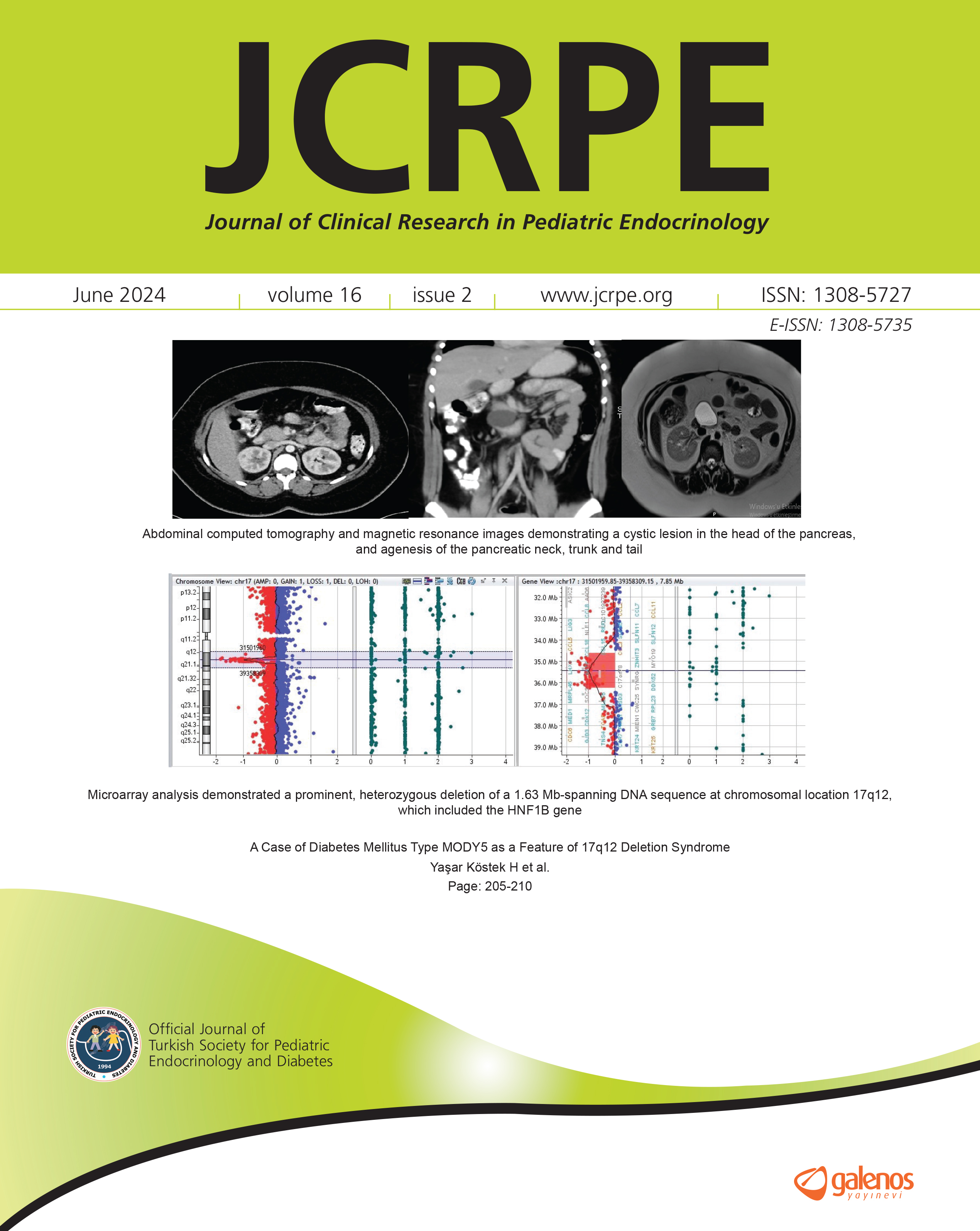Growth Hormone Dosing Estimations Based on Body Weight Versus Body Surface Area
Özge Besci1, Reyhan Deveci Sevim2, Kübra Yüksek Acinikli1, Gözde Akın Kağızmanlı1, Sezen Ersoy3, Korcan Demir1, Tolga Ünüvar2, Ece Böber1, Ahmet Anık2, Ayhan Abacı11Dokuz Eylül University Faculty of Medicine, Department of Pediatric Endocrinology and Diabetes, İzmir, Turkey2Aydın Adnan Menderes University Faculty of Medicine, Department of Pediatrics, Division of Pediatric Endocrinology, Aydın, Turkey
3Dokuz Eylül University Faculty of Medicine, Department of Pediatrics, İzmir, Turkey
INTRODUCTION: Both body weight (BW)- and body surface area (BSA)-based dosing regimens have been recommended for growth hormone (rhGH) replacement. The aim was to compare the two regimens to determine if either resulted in inadequate treatment depending on anthropometric factors.
METHODS: The retrospective study included children diagnosed with idiopathic isolated growth hormone deficiency. BW-based dosing in mcg/kg/day was converted to BSA in mg/m2/day to determine the equivalent amounts of the given rhGH. Those with a BW-to-BSA ratio of more than 1 were allocated to the relatively over-dosed group, while the remaining patients with a ratio of less than 1 were assigned to the relatively under-dosed group. Patients with a height gain greater than 0.5 standard deviation score (SDS) at the end of one year were classified as the height gain at goal (HAG), whereas those with a height gain of less than 0.5 SDS were assigned as the height gain not at goal (NHAG).
RESULTS: The study included 60 patients (18 girls, 30%). Thirty-six (60%) patients were classified as HAG. The ratio of dosing based on BW-to-BSA was positively correlated both with the ages and body mass index (BMI) levels of the patients, leveling off at the age of 11 at a BMI of 18 kg/m2. The relative dose estimations (over- and under-dosed groups) differed significantly between the patients classified as HAG or NHAG. Fifty-six percent of NHAG compared to 44% of HAG patients received relatively higher doses, while 79% of HAG compared to 21% of NHAG received relatively lower doses (p=0.006). When the patients were subdivided according to their pubertal status, higher doses were administrated mostly to the pubertal patients in both the NHAG and HAG groups. In the pre-pubertal age group, 73% of NHAG compared to 27% of HAG received relatively higher doses, while 25% of NHAG compared to 75% of HAG received relatively lower doses (p=0.01).
DISCUSSION AND CONCLUSION: Dosing based on BW may be preferable in both prepubertal and pubertal children who do not show adequate growth responses. In prepubertal children, relatively lower doses calculated based on BW rather than BSA provide similar efficacy at lower costs.
Corresponding Author: Ayhan Abacı, Türkiye
Manuscript Language: English



























